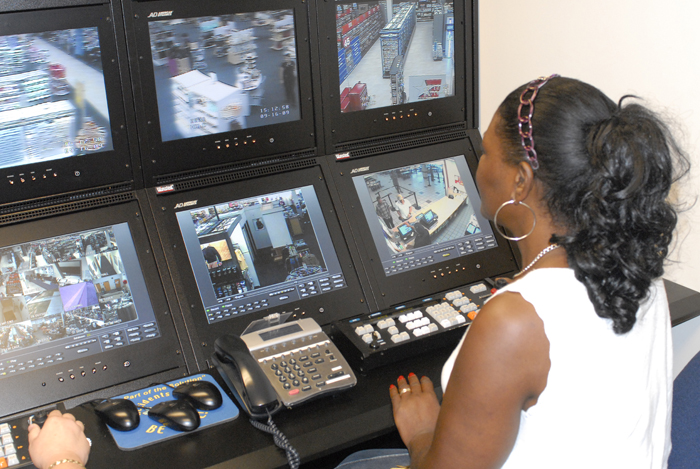
By Vince Little, The Bayonet – United States Army, Public Domain, Link
If you’ve walked into your local grocery store lately and noticed toothpaste, deodorant, or even baby formula locked behind plastic cases, you’re not imagining things. What used to be easy, grab-and-go shopping is now interrupted by security protocols that feel more like a high-end electronics store than a supermarket. So why are grocery store theft concerns leading major retailers to lock up basic items? The answer is complicated—but it’s rooted in rising theft, store closures, and evolving shopper behavior. Whether you’ve been inconvenienced or just curious, here’s what’s really going on behind those locked cabinets.
Shoplifting Has Spiked in Key Cities
Retail theft has been on the rise, especially in major urban areas. Cities like San Francisco, New York, and Chicago have seen significant increases in shoplifting incidents over the past few years. In response, major grocery chains are tightening security on frequently stolen items, especially those with high resale value like razors, baby formula, and cosmetics. Organized retail crime rings often target everyday goods because they’re easy to steal and flip for cash. As a result, locking up merchandise has become a defensive tactic, not a customer service decision.
Basic Items Are Targeted Because They’re Easy to Resell
You might wonder why common goods like shampoo or laundry detergent are suddenly behind barriers. It turns out, these everyday products are a goldmine for thieves. They’re small, lightweight, and always in demand, making them easy to resell on online marketplaces or at street-level operations. Items that seem low-cost individually can bring in thousands when stolen in bulk. To combat this, stores are now treating personal care and household staples as high-risk grocery store theft targets.
Some Retail Chains Are Testing Lock-Ups Before Going Fully Automated
In addition to stopping theft, some stores are using locked cases as a transition phase before switching to full automation. Several grocery chains are experimenting with cashier-less setups, where shoppers scan items and pay digitally. Locked goods require employee interaction, which helps stores monitor inventory while discouraging theft. These security measures may also be tied to data collection, tracking how often items are requested or which products are most frequently stolen. In short, locked cabinets serve more than one purpose behind the scenes.
The Rise in Theft Is Forcing Stores to Rethink Staffing and Layouts
Retailers are caught between keeping shelves stocked and preventing losses. Locking up merchandise is one way to protect profits without hiring more security staff. But it also leads to longer wait times and increased frustration for honest shoppers. Some stores are even redesigning layouts to place high-risk goods near customer service counters for easier monitoring. As grocery store theft continues to impact bottom lines, expect more stores to shift toward layouts that prioritize control over convenience.
Customer Experience Is Taking a Hit—But Retailers Say It’s Necessary
Let’s face it—waiting for an employee to unlock a case just to grab toothpaste is frustrating. Many customers feel embarrassed or annoyed by the extra step. However, retailers argue it’s a necessary trade-off to stay in business and avoid raising prices even further. With inflation already squeezing budgets, some stores prefer locking goods over hiking prices across the board. While not ideal, they see it as the lesser of two evils.
Some Chains Are Quietly Closing Locations Due to Theft
In some high-theft areas, grocery stores aren’t just locking items—they’re closing altogether. Several major retailers have announced store closures in neighborhoods where theft and security costs have made operations unsustainable. This impacts food access, jobs, and community trust. While locking up items might seem like a minor inconvenience, it’s often the first step in a much larger issue. If grocery store theft trends continue, more communities could lose their local stores altogether.
The Debate: Security vs. Dignity
There’s growing debate about how locking up everyday items impacts shoppers—especially in communities already struggling with food insecurity or poverty. Critics argue that locking up basic goods sends a message of mistrust and increases the stigma for those who already feel watched when they shop. On the other hand, store owners claim they’re doing what’s necessary to keep doors open and employees safe. Finding the balance between protecting products and respecting customers remains a major challenge for the retail industry.
What Locked Shelves Really Say About Where We’re Headed
At its core, the rise of locked cabinets in grocery stores is a symptom of larger issues: economic stress, organized theft, and shifting retail models. As stores weigh security against shopper satisfaction, more of us will likely encounter barriers where there used to be easy access. It’s a reflection of how fragile the balance has become between trust and protection. Whether you see it as a smart safeguard or an inconvenience, one thing is clear—grocery store theft is changing how we shop, one locked shelf at a time.
Have you noticed more locked items at your local store? How do you feel about it—as a customer or as someone who works in retail? Share your thoughts in the comments below!
Read More
Why Are Certain Discount Grocery Chains Failing Sanitation Audits?
